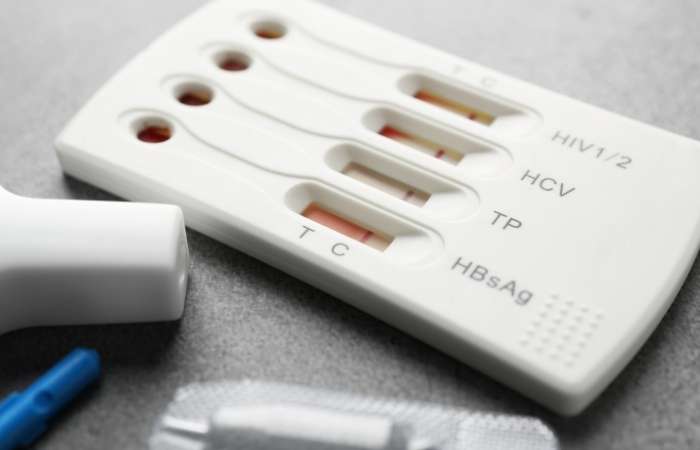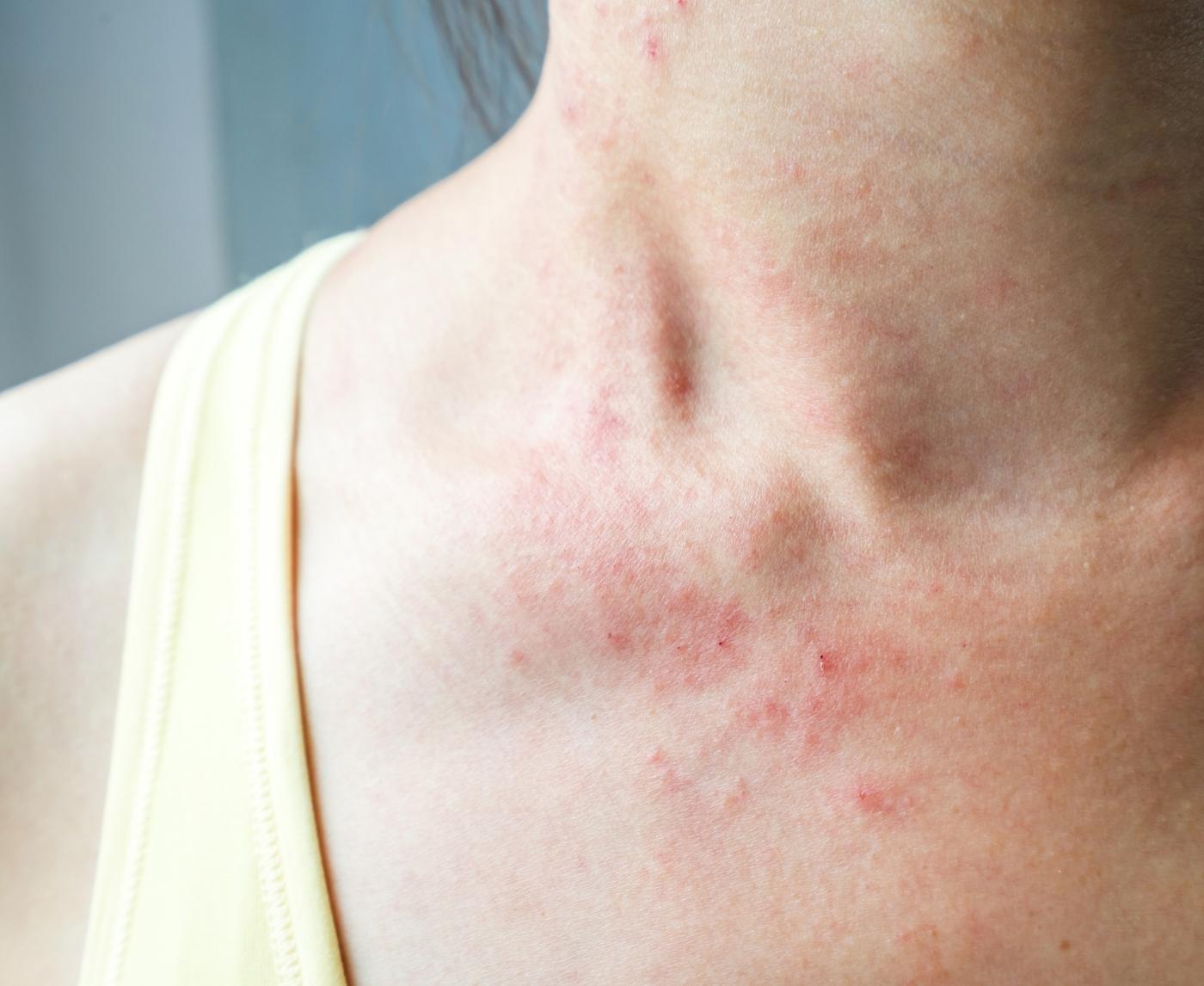You Can Get an STD from Oral Sex, Here’s How It Happens
Quick Answer: Syphilis rashes are often painless, non-itchy, and easy to misdiagnose as eczema, heat rash, or allergic reactions. If you’ve had unprotected sex, even once, and notice unexplained skin changes, it’s time to test.
It Doesn’t Look “Bad,” That’s the Problem
The first time Marissa, 28, saw the faint red dots on her chest, she thought it was just a reaction to a new detergent. The bumps didn’t itch. They didn’t hurt. They disappeared after a few days, only to reappear weeks later, this time on her palms. “I figured it was stress,” she said. “Maybe eczema or hormones.” It wasn’t until she went in for a routine pap smear that her provider raised the possibility she never considered: secondary syphilis.
This is how it goes for thousands of people each year, especially in places like Alabama, where syphilis rates have skyrocketed. The infection hides in plain sight. And it’s not always some dramatic sore or ulcer that signals something is wrong. Sometimes, it’s just a rash. A quiet, sneaky, painless rash that looks like nothing serious, until it is.
There’s a reason syphilis has long been called “The Great Pretender.” The infection can mimic dozens of other conditions, especially when it reaches its secondary stage, typically a few weeks after the initial sore (which many people never even notice).
Unlike textbook images of angry ulcers or crusty scabs, most syphilis rashes are subtle. They don’t scream “STD.” They whisper “maybe it’s just dry skin.” The rash may appear:
- As faint red or brownish spots on the trunk, arms, or thighs
- On the palms of the hands or soles of the feet, which is rare for most rashes, but a classic sign of syphilis
- As symmetrical blotches that don’t itch or ooze
- Alongside hair loss, fever, or swollen lymph nodes, or with none of these at all
According to the CDC, secondary syphilis rashes are commonly misdiagnosed as eczema, psoriasis, pityriasis rosea, or even drug reactions. Some patients report getting steroid creams, allergy tests, or scolding for “not moisturizing enough”, all while the infection continues to spread internally.

People are also reading: Why So Many Georgia College Students Get STDs
When a Rash Isn’t Just a Rash
Syphilis doesn’t care how clean you are, how many partners you’ve had, or whether you used a condom. It spreads through skin-to-skin contact, oral, vaginal, or anal, and condoms don’t always cover the areas where transmission happens. That means even people with one partner, or one encounter, are at risk.
Here’s where it gets trickier: the rash doesn’t always show up right away. In fact, some people never see the first-stage sore (called a chancre) at all. It can be hidden in the mouth, under the foreskin, or inside the vagina, places that don’t get a lot of daily scrutiny. By the time the rash appears, the bacteria have already entered the bloodstream.
And here’s the kicker: many people don’t feel sick. They’re not bedridden. They’re not covered in hives. They’re going to work, going to class, going on dates, with a silent, systemic STD that’s easy to miss but dangerous to ignore.
In one peer-reviewed case study, a 35-year-old man visited three urgent care clinics over two months for a non-itchy rash on his torso and mild fatigue. He was treated for contact dermatitis, then scabies, then “stress-related hives.” Only when a nurse practitioner suggested an STD panel did his syphilis diagnosis finally come in, stage 2, with systemic signs already underway.
One of the cruelest things about syphilis isn’t the symptoms, it’s how often they’re dismissed. A faint rash that doesn’t itch? It must be allergies. A sore that isn’t painful? Maybe it’s an ingrown hair. Even experienced clinicians have been known to miss it, especially when patients don’t “look like” the stereotype of someone with an STD.
Jared, 42, says his doctor told him he was just “working too much.” His rash was chalked up to stress. When he asked about testing for STDs, he was told it wasn’t necessary because he was married. Two months later, after his symptoms returned with joint pain and fever, another provider finally ran the panel. It came back positive, for secondary syphilis.
“I felt betrayed,” he said. “By my body, by the system, by my assumptions.”
According to the CDC’s 2023 STD Surveillance Report, misdiagnosis of syphilis is a growing problem, especially in non-urban and under-resourced healthcare environments. And Alabama, in particular, has become a hotspot.
Why Alabama? A Perfect Storm of Stigma, Gaps, and Silence
Alabama had one of the highest rates of reported syphilis cases per capita in 2024, a 400% increase over the past ten years. That number is not only shocking, it's also sad. Because it means that thousands of people are getting sick with something we've been able to treat since 1943.
So, what's happening?
To begin with, access to sexual health services is very different in different parts of the state. There may not be a sexual health clinic within 50 miles of a rural county. Even in cities, hours are limited, providers are busy, and STI testing is not usually part of regular care unless the patient asks for it.
Now, add some shame
Religious shame, fear of being judged, or the idea that STDs only happen to people who sleep around. These myths make people feel ashamed, which makes them not want to talk. Being quiet makes things take longer. And putting things off lets syphilis spread, one rash at a time.
Dr. Lacey Hendricks, an infectious disease physician based in Birmingham, says she sees at least one case of secondary syphilis every week. “Most of them didn’t come in asking for a test,” she explains.
“They came in because something ‘just looked weird.’ A spot. A patch. A few bumps. And they were all shocked when I said, ‘We need to run a full panel.’”
Syphilis Comes in Stages, But the Rash Doesn’t Wait for You to Catch Up
In medical textbooks, syphilis unfolds neatly: first a painless sore, then a rash, then years of silence before potential complications. But in real life? It’s messy. The stages blur. Some people never notice the sore. Some skip straight to the rash. And some only realize something is wrong when a partner tests positive first.
The rash is most common in the secondary stage, usually 2 to 12 weeks after infection. By that point, the bacteria have already slipped into the bloodstream. It’s not just a skin thing. It’s systemic. The rash can come and go, show up in unexpected places like the scalp or eyelids, or barely be visible at all under certain lighting. It might appear alongside fever, sore throat, fatigue, or none of the above.
People describe it as “pink dots,” “faint freckles,” “dry patches,” or “a bruise that never fully developed.” In one documented case, a 12-year-old was misdiagnosed with PLEVA, a rare skin disorder, when her actual diagnosis was secondary syphilis. The visual overlap was that convincing.
Dr. Mallory King, a sexual health educator, says most people don’t Google “syphilis” when they notice a rash.
“They search ‘weird red patch after sex’ or ‘STD that looks like eczema.’ That’s why it gets missed. The internet tells them what looks scary. Syphilis doesn’t always look scary. It looks... mild.”
In the latent stage, symptoms may vanish entirely. No rash. No fever. Just silence. But the bacteria? Still active. Still replicating. Still doing damage under the surface. If untreated, syphilis can progress to its tertiary stage, affecting the brain, heart, and nervous system. That stage doesn’t happen to everyone, but when it does, it can be irreversible.
You Don’t Have to Wait for It to Get Worse
Testing is straightforward. No biopsy. No invasive exams. Just a blood test. And thanks to at-home kits, you can collect your own sample without stepping foot into a clinic. You prick your finger, mail it in, and get results online within days. No one stares. No one judges. No one asks why.
There’s no “right time” to test, but there is a wrong one, and that’s never. If you’ve had unprotected sex, noticed unexplained rashes or sores, or had a partner who tested positive, don’t wait for your symptoms to match Google images. Early syphilis doesn’t always leave clues. Sometimes, it whispers. And if you miss the whisper, it shouts later.
What happens if you do test positive? You get treated. With penicillin. That’s it. One of the most curable STDs in the world, if you catch it.
If you’re unsure what to order, the Chlamydia, Gonorrhea & Syphilis At-Home STD Test Kit covers syphilis and other common infections like chlamydia, gonorrhea, and HIV. It’s designed for exactly this moment, the “could this be something?” moment. Not the emergency room moment. Not the regret moment. The early one. The smart one.
Testing doesn’t mean you’re dirty. It means you’re paying attention.

People are also reading: Sore Throat, White Spots, No Fever? It Might Not Be Strep
FAQs
1. Is this weird rash really syphilis?
Honestly? It could be. If it showed up a couple weeks after unprotected sex, especially on your palms, soles, or chest, it’s worth testing. But don’t panic yet. Syphilis rashes don’t usually itch or hurt, which is why they’re so easy to brush off as “nothing.”
2. What does a syphilis rash feel like?
Here’s the wild part, it often doesn’t feel like anything. No burn, no itch, no sting. It just... exists. People say things like “I thought it was dry skin,” or “Looked like bug bites, but less angry.” That quietness is what makes it dangerous.
3. I don’t see a sore, can I still have syphilis?
Yes. The sore (called a chancre) might’ve come and gone without you even noticing, especially if it was inside the mouth or genitals. Many people only notice something’s off when the rash appears weeks later.
4. Can you get syphilis from oral sex?
You can. It’s one of the most common routes. Even if there’s no visible sore, skin-to-skin contact with infected tissue, mouth included, can pass it on. Condoms don’t always cover the full risk area, either.
5. Is it normal to not feel sick at all?
Totally normal. Syphilis is sneaky. You can feel 100% fine and still be infected. Some folks go years without symptoms, or they have signs so mild they never connect the dots.
6. What happens if I just ignore it?
The rash might fade, but the bacteria won’t. Left untreated, syphilis can mess with your heart, brain, and nervous system. It’s rare, but when it hits, it hits hard. And the kicker? It was curable the whole time.
7. How soon should I test after exposure?
Most blood tests pick it up about 3 weeks after exposure. If you test too early and it's negative, test again in a few weeks. If you've got symptoms now, don’t wait. Just do it.
8. Can I test without going to a clinic?
Yep. There are at-home test kits where you prick your finger, send the sample off, and get results online. No waiting room. No small talk with a stranger. Just you, your results, and next steps.
9. If I test positive, what’s the treatment?
One or more shots of penicillin, depending on the stage. That’s it. Old-school antibiotics that knock it out fast, especially if you catch it early. You may feel flu-ish for a day after, but then you’re done.
10. Do I have to tell my partner?
Legally, it depends on where you live. Ethically? Yeah, it’s the right thing to do. It’s not about blame, it’s about stopping the ping-pong of reinfection. Most people are grateful for the heads-up, not angry.
You Deserve Answers, Not Assumptions
Maybe it’s just heat rash. Maybe it’s dry skin. Maybe it’s nothing. But if something on your body feels off, and you’ve had sex with another human being, it’s okay to wonder. It’s okay to ask. And it’s more than okay to test.
This isn’t about shame. It’s about clarity. It’s about protecting your body, your future, and the people you care about. Because syphilis doesn’t always scream. Sometimes, it barely whispers. But now that you know what to look for, you don’t have to wait for it to get louder.
Don’t wait and wonder, get the clarity you deserve. 6‑in‑1 At‑Home STD Test Kit checks for the most common STDs discreetly and quickly.
Sources
2. Syphilis – Symptoms and Causes – Mayo Clinic
3. Syphilis Rash: Pictures, Symptoms, Treatments, and More – Medical News Today






